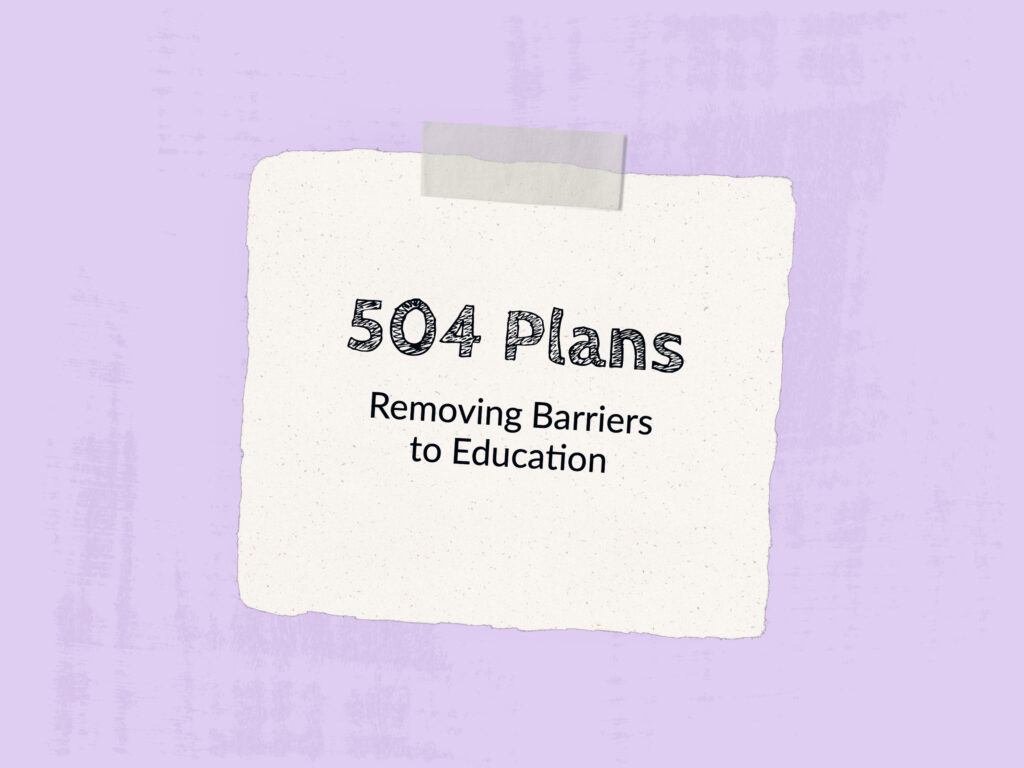
Before 504 Plans
Think back to being a student back in middle school or high school. Now imagine that experience from the perspective of an individual with a disability. What challenges would you face if you used a wheelchair in your school? Crutches? What if you had pain with walking, sitting, or writing? What would it be like if you were easily overwhelmed by some sensory experiences? Had shortness of breath with exertion? Had paralyzing anxiety? Or any number of other conditions that may impact a “major life activity” for you? Your education experience might look very different.
The Rehabilitation Act of 1973
Many individuals have physical or mental conditions that can affect their everyday activities, including school activities. In school, some of these students are able to meet academic standards and do not require special education services. But that does not mean that they don’t need accommodations to help them fully participate in their school experience.
The Rehabilitation Act of 1973, section 504, provides provisions for equal access and protections against discrimination for students with disabilities in public schools (as well as adults in the workplace). A 504 Plan provides a safety net for students who may not qualify for special education services. To qualify for 504 Plan services, a student must have a “physical or mental impairment that substantially limits a major life activity.”
504 Plans at School
To illustrate, imagine a student with spina bifida who uses a wheelchair. This student’s condition may not impact them cognitively. Therefore, they are able to learn the academic materials without the need for additional educational support such as an Individual Education Plan (IEP). However, the student may need some accommodations to access the school environment fully.
For instance, as a wheelchair user, they may need access to an elevator to reach the classrooms on the second floor, extended time to get from class to class, special desk or table heights to accommodate their wheelchair, breaks for pressure weight shifts, or nursing assistance for catheter management. Given support, the student can fully engage in their school experience and contribute to the school culture.
Another example may be a student who has social anxiety. In this case, the school may choose to offer accommodations such as allowing alternative assignments such as videotaping or voice recording instead of live oral presentations, providing one-on-one check-ins with the teacher instead of raising their hand to ask questions in front of the entire class, and/or allowing the student to pick one familiar student to work with for group projects instead of being assigned to a larger work groups.
What is Included?
A written 504 Plan helps to define what individual supports are needed and documents the school’s responsibilities and efforts to meet those needs. Therapy services may be part of the 504 Plan but these services tend to be indirect, providing consultation or training. For example, OT or PT may train school staff on proper equipment use and transfer techniques. They might also consult with teachers regarding alternative positioning and adaptive equipment options as a student’s needs change.
Generally speaking, 504 Plans are not as formal as IEPs and do not require written goals for therapy services. However, a written assessment of the student’s needs and a clear list of services and accommodations needs to be created. Most schools have a 504 coordinator who oversees this process.
Students of all abilities should have the opportunity to learn, grow, and contribute to their community, even if they do it slightly differently. If you have a child or student who may benefit from therapy services or consultation, Enablr Therapy can help. Contact us for more information.
Enablr Therapy offers speech, occupational, and physical therapy services to kids of all ages and abilities through school-based therapy services for virtual school.
Reference
US Department of Education. (2020, January 10). Protecting Students with Disabilities: Frequently Asked Questions About Section 504 and the Education of Children with Disabilities.


